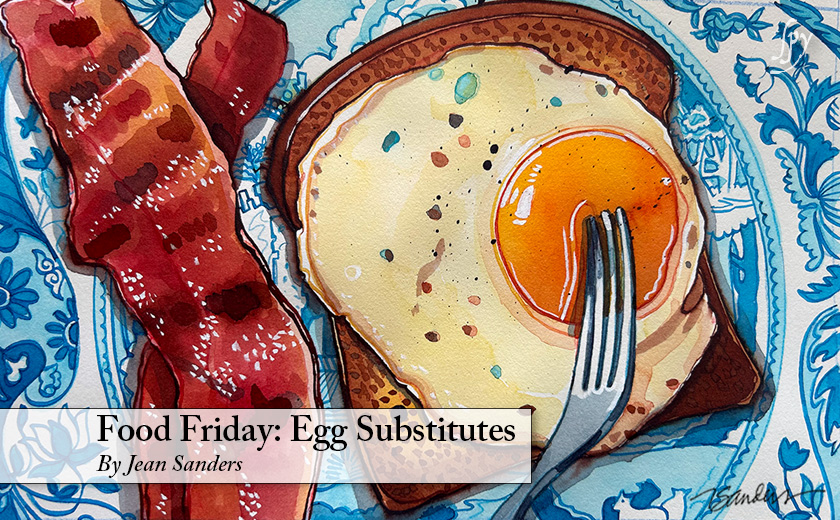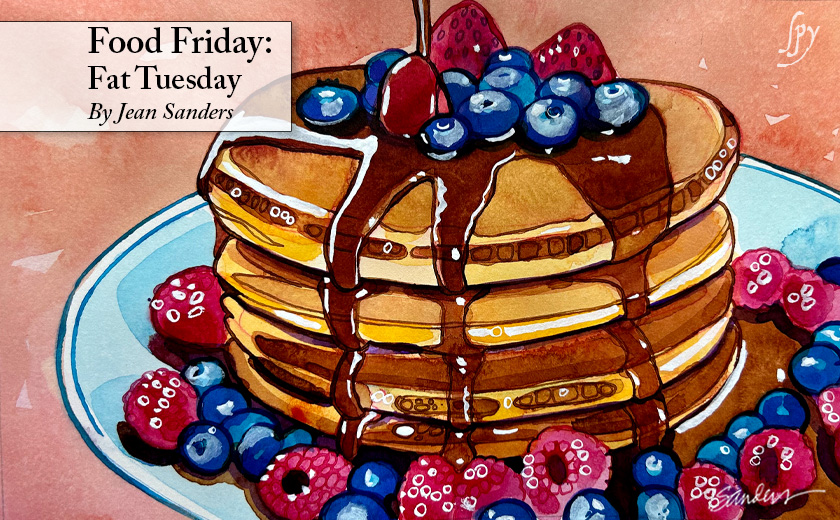
Eggs are the great equalizer: everyone needs them, and everyone has the same horrified reaction to their current sky-high prices. Yikes. I look forward to the days when I can push the shopping cart past the Food Lion’s refrigerated case, and keep on tooling down the aisle, past the eggs, toward the yogurt and the butter. I can bypass the rubberneckers who stand gawping at the signs posting prices, and the scrawled apologies for limited egg supplies.
Egg prices are now vertiginous, as I am sure you have noticed, by a minimum of 30% and most can be up about 60%. I see Facebook photo posts of $15 eggs – not around here – but I still find six and seven dollars for a dozen eggs pretty pricy. It’s time to rein in some of our spending. Waffle House has instituted a 50¢ per egg surcharge in their restaurants. New York City bodegas are selling “loose eggs”: 3 for $2.99. Food Business News says, “Nearly 7 million commercial chickens and turkeys were scheduled to be euthanized following outbreaks of highly pathogenic avian influenza (HPAI) the week of March 28, according to the Animal and Plant Health Inspection Service of the US Department of Agriculture.” Which can only mean that the prices will be going up again.
And then there are the shopping days when I need to buy eggs. Do I want large, extra-large, jumbo, free-range, cage-free, pasture raised, brown, white, certified organic, Omega-3 enriched, vegetarian fed, cardboard carton, foam cartons, a half dozen, a dozen, eighteen? (I found quail eggs the other day, at the tonier grocery store. I thought about staging a Brideshead Revisited moment.) It used to be easy shopping for eggs. I would stride with confidence to the egg case, pick out a cardboard box of extra large brown eggs, examine them briefly for cracks, place carton carefully in my cart, and move along briskly to the rest of my grocery shopping.
Now, in our new golden age, after having survived the COVID pandemic, we are facing a devastating and avian influenza, which is infecting whole farms and millions of birds nationally. We are being encouraged to acquire our own flocks of back yard birds. And while the prospect of raising steamingly fresh, hyper-local, bespoke eggs might tempt some folks, I think I will continue to be thrifty, and buy the eggs we need, that I can afford, and make some substitutions where I can.
It is easier to make replacements for eggs in baking than it is to replace them as the centerpiece of your morning meal: some mornings you just need a bacon, egg, and cheese sandwich. In baking recipes eggs have two roles: as a binder, holding the recipe together, and as a leavening agent, which helps the recipe to rise. Half a banana, 1/4 cup of applesauce, or ground flax seeds can all be used as binders in simple drop cookie recipes. For a leavening agent you can try 1-1/2 tablespoons vegetable oil mixed with 1-1/2 tablespoons water and 1 teaspoon baking powder per egg.
And then there is Aquafaba – the liquid you find in a can of chick peas. An amazing miracle liquid, it can be whipped to a stiff froth – like egg whites. New York Times egg substitutions
Canned coconut milk, yogurt, buttermilk: Swap in 50 grams (about 3 tablespoons) for 1 large egg.
And here is one I never would have guessed: use instant mashed potatoes as the binding agent in meatloaf.
And here is one I will never in a million years touch: tofu. Ickpittooee. But I think Nacho Cheese Doritos are fine dining, so you do you. Tofu
Our smart friends at Food52 have lots of suggestions: Food52
Vegan chocolate cupcakes from the New York Times
Vegetarians and people with food allergies are wise to the ways of egg substitutions: The health food store can be your new best friend.
It’s going to get tricky around Easter and Passover. Start saving your pennies.
(The Slate Money podcast has a weekly egg watch: Slate Money Egg Heist! )
Everything you ever wondered about eggs
Be creative, and save your best fresh back yard eggs with the orange yolks for a nice leisurely weekend breakfast. It is finally spring, after all.
“Probably one of the most private things in the world is an egg before it is broken.”
― M.F.K. Fisher
Jean Dixon Sanders has been a painter and graphic designer for the past thirty years. A graduate of Washington College, where she majored in fine art, Jean started her work in design with the Literary House lecture program. The illustrations she contributes to the Spies are done with watercolor, colored pencil and ink.












